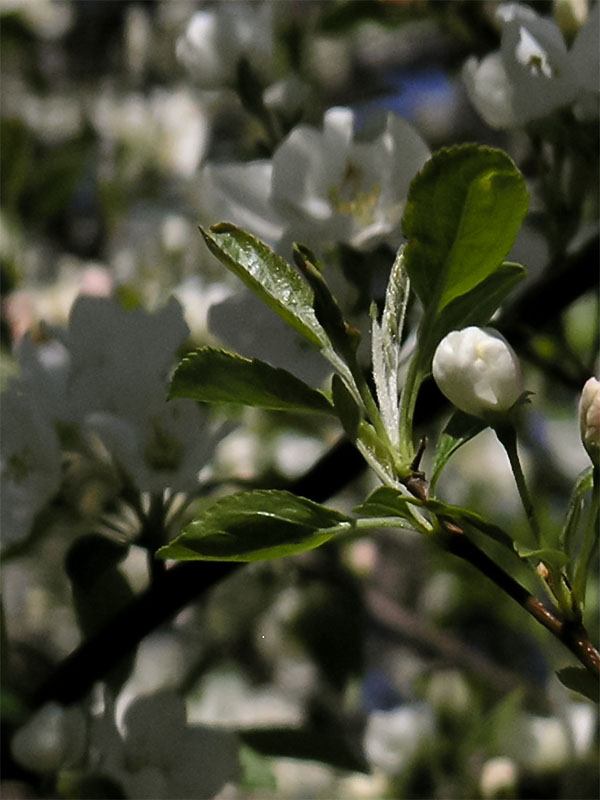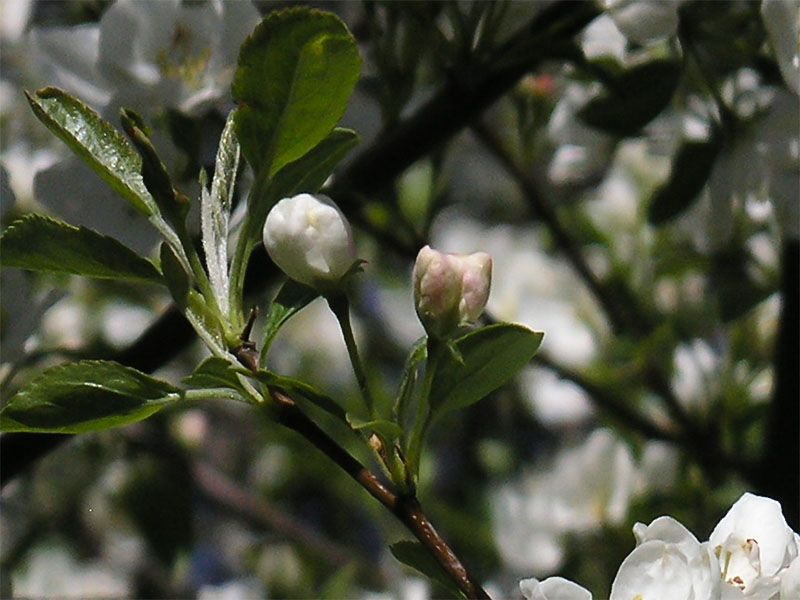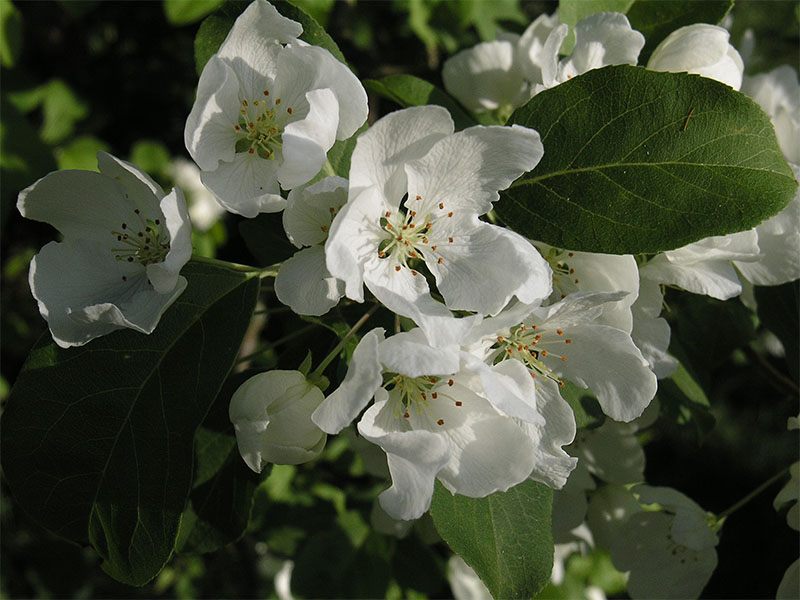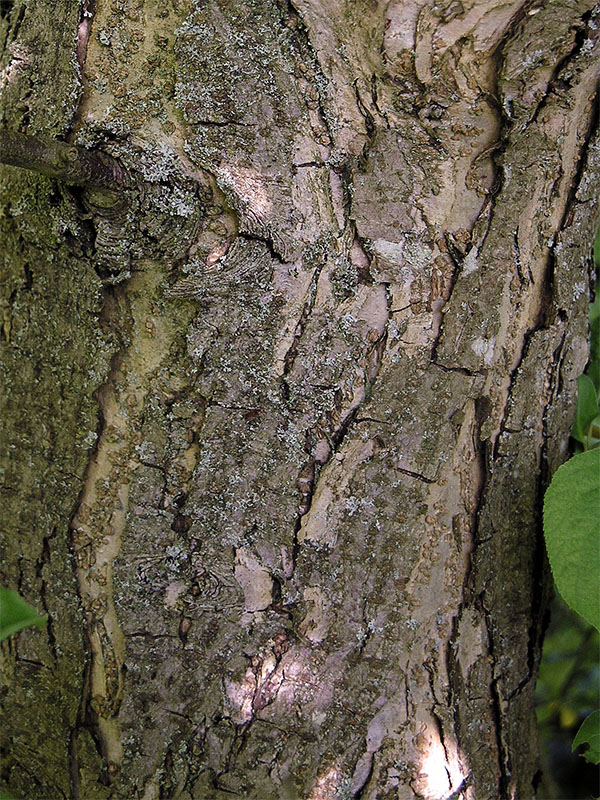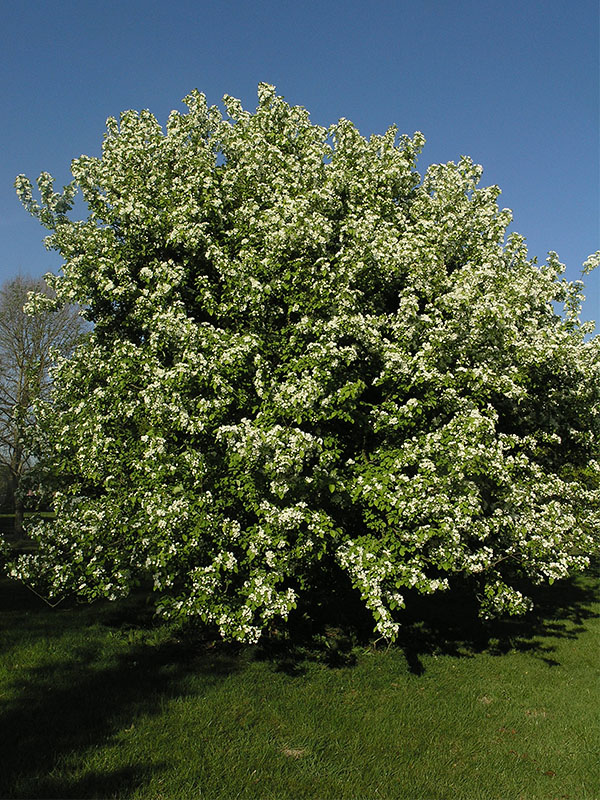
Woody > Malus > Malus baccata > Malus baccata var. mandshurica
Malus baccata
var. mandshurica
Manshurica Siberian Crabapple, Manchurian Crabapple
Origin: Manchuria, China; This species can also be found growing in Russia, Korea and Central Japan. Introduced into cultivation in 1824.
| Family |
| Rosaceae |
| Genus |
| Malus |
| Species |
| baccata |
| Category |
| Woody |
| Type |
| Tree (deciduous) |
| Variety |
| mandshurica |
| Pronunciation |
| USDA Hardiness Zone |
| 2 - 7 |
| Canadian Hardiness Zone |
| 0a - 6b |
| RHS Hardiness Zone |
| H6 - H7 |
| Temperature (°C) |
| -46 |
| Temperature (°F) |
| -50 |
| Height |
| 9 - 12 m |
| Spread |
| 9 - 12 m |
Photographs
Description and Growing Information
Flowering Period
| Landscape |
| Ideal for city settings because of its pollution tolerance and natural beauty. It is low-maintenance and its density can help provide windbreaks and shade in the summer months. M. baccata var. mandshurica is often planted as a conservation tree, and is popular with pollinators. Various animals also feed on its fruit from autumn into winter. |
| Cultivation |
| Prefers full sun and moderately fertile, well-drained loam with a lower pH level. Moderate pruning is required and should be done in later winter or early spring. |
| Shape |
| Upright rounded. |
| Growth |
| Medium |
| ID Characteristic |
| Can be differentiated from other Malus species by its slightly larger blooms and fruit (than M. baccata) and intensely sweet scent. |
| Pests |
| Moderately to very susceptible to powdery mildew. Can be susceptible to apple scab, apple canker and honey fungus. Can fall prey to tent caterpillars, fall webworms, aphids, Japanese beetles, borers and scale. |
| Habitat |
| Mixed temperate forests. |
| Bark/Stem Description |
| Deep creases in mature bark. |
| Flower/Leaf Bud Description |
| Buds follow an alternate pattern and are 2 - 5 cm long with overlapping (imbricate) scales. |
| Leaf Description |
| Alternate elliptic-oblong leaves that are approximately 7.5 cm long with serrate margins. Undersides of leaves are paler than the smooth, darker tops. |
| Flower Description |
| Corymbs can contain 3 - 6 highly-fragrant blooms approximately 3.8 cm in diameter. |
| Fruit Description |
| Crabapples that measure 1.6 cm on average that hang from 2.5 cm stems. |
| Colour Description |
| Nearly white with flowers in spring and green with foliage in the summer. In autumn the leaves turn yellow and the white flowers are replaced with red or yellow fruit. |
| Texture Description |
| The bark is coarse and deeply defined on the trunk. The leaves have smooth cuticles. Smaller branches and twigs have a lumpy appearance due to numerous buds and nodes. |
| Notable Specimens |
| Missouri Botanical Gardens, St. Louis, Missouri, United States of America. |
| Propagation |
| Chip budding in late summer, grafting in mid-winter or seed. |
| Ethnobotanical Uses (Disclaimer) |
| The fruit is edible and can be consumed raw, cooked or preserved. The wood from this tree is used for smoking meats. The juice is used for liver problems as well as gout, dysentery and diarrhea relief. |
References
Missouri Botanical Garden (2016) Malus manshurica. Retrieved from http://www.missouribotanicalgarden.org/
Tober, D. (2013) Manchurian crabapple (Malus mandshurica). USDA-Natural Resources Conservation Service, Plant Materials Center, Bismarck, ND.
